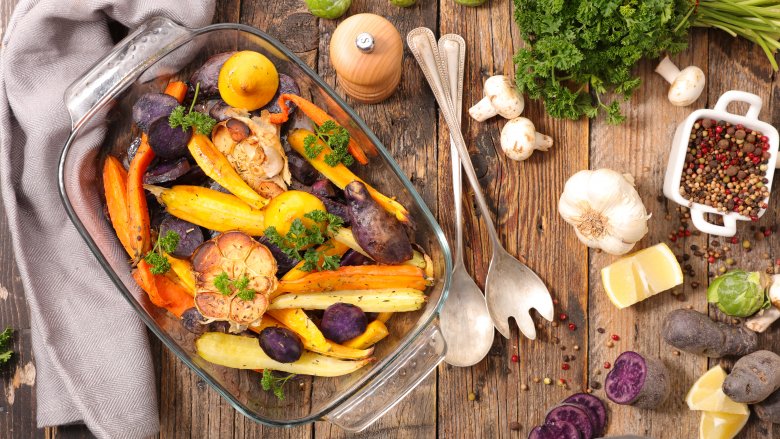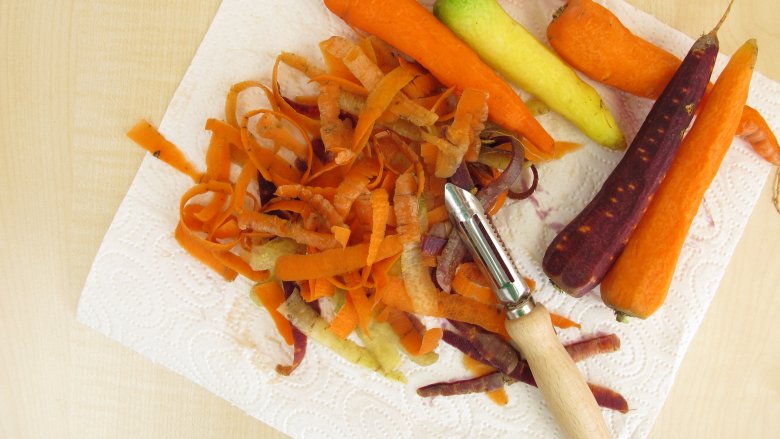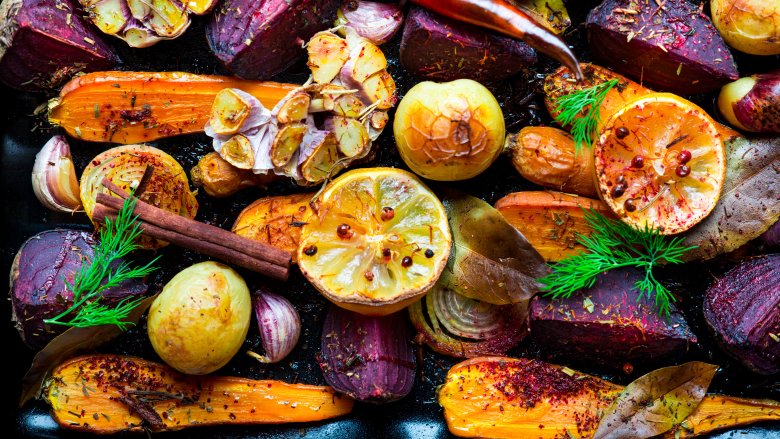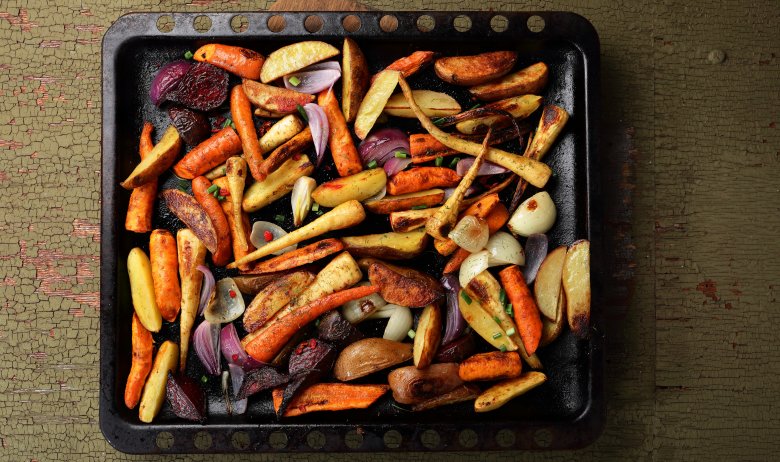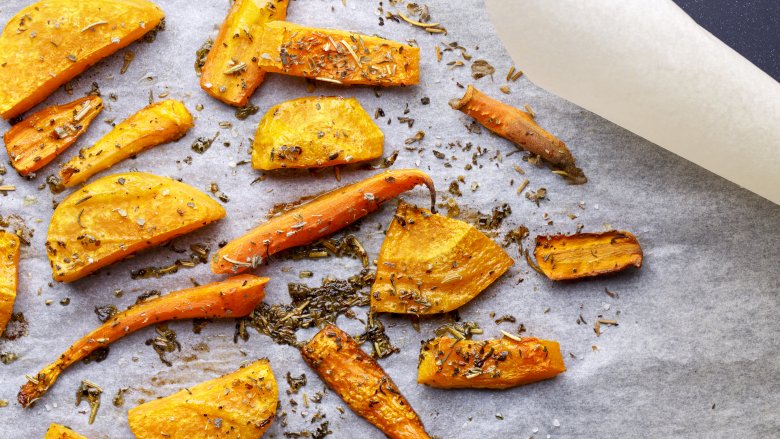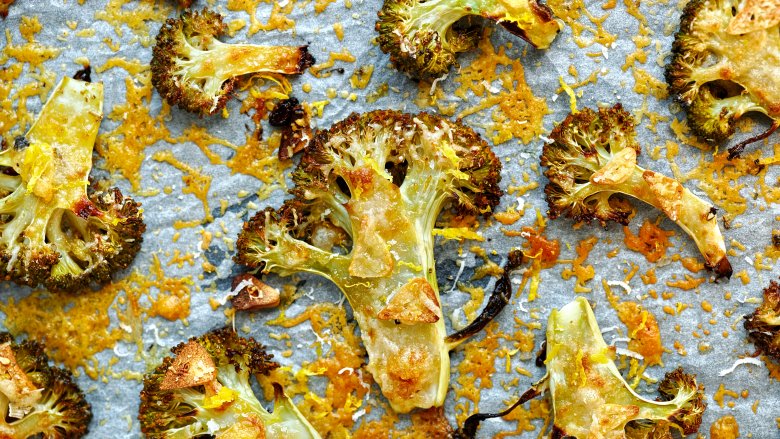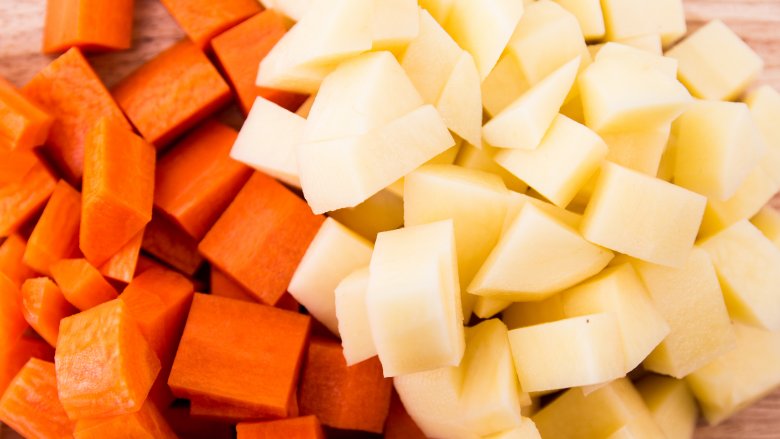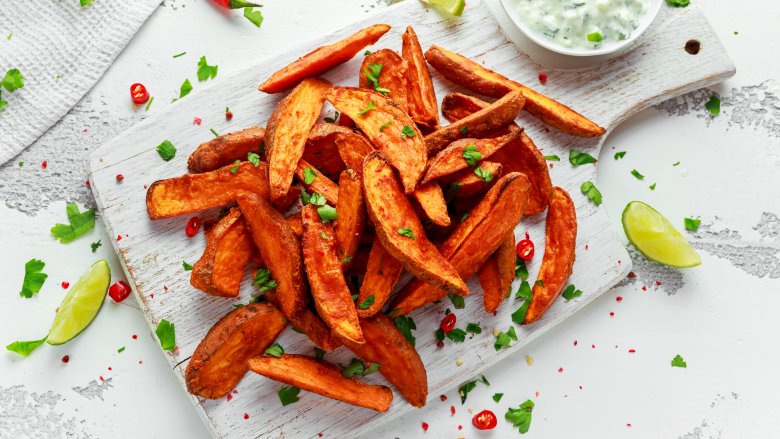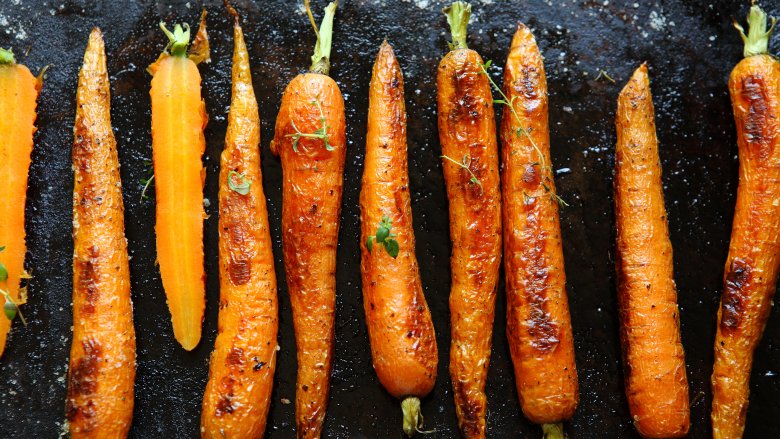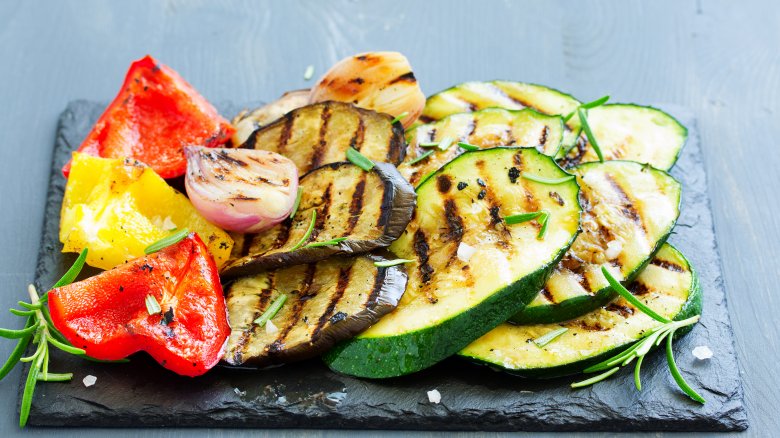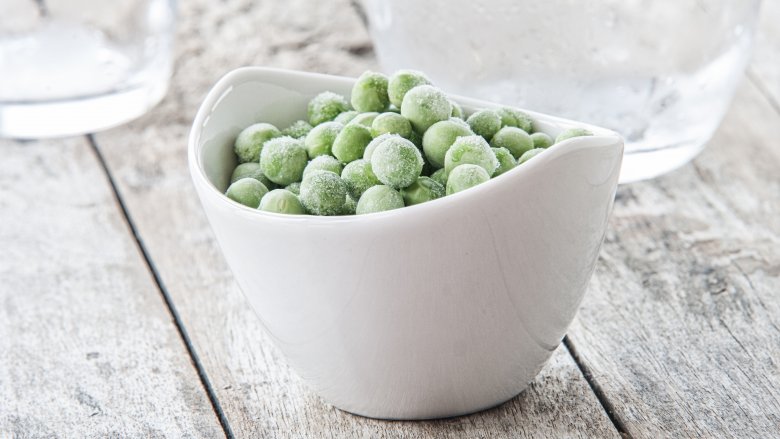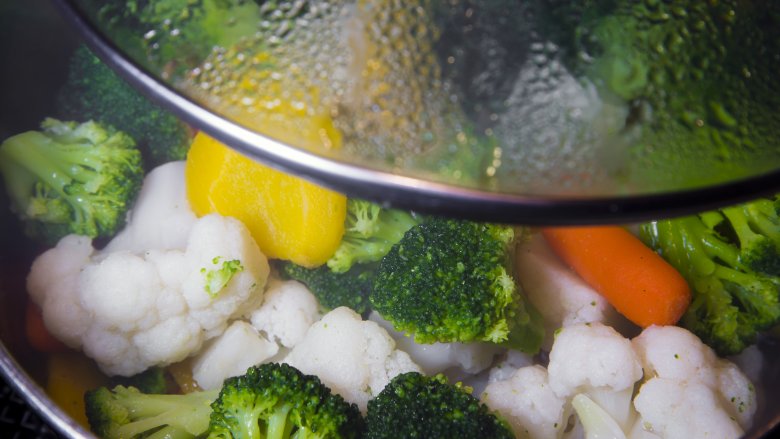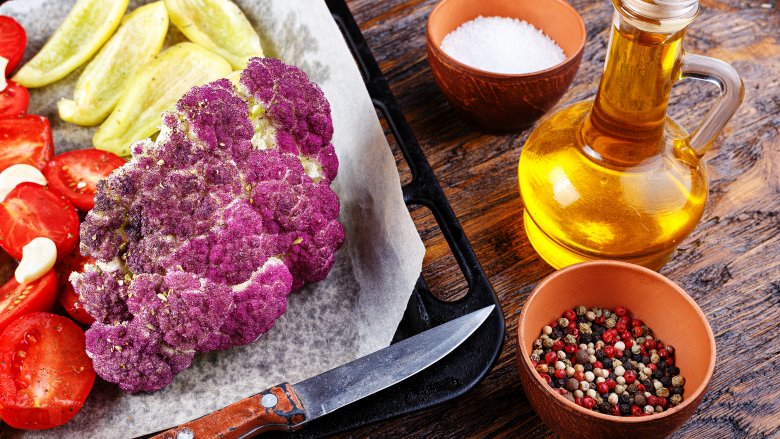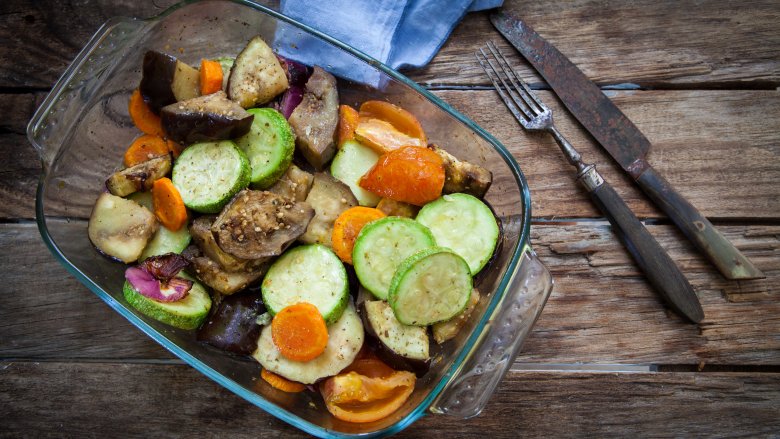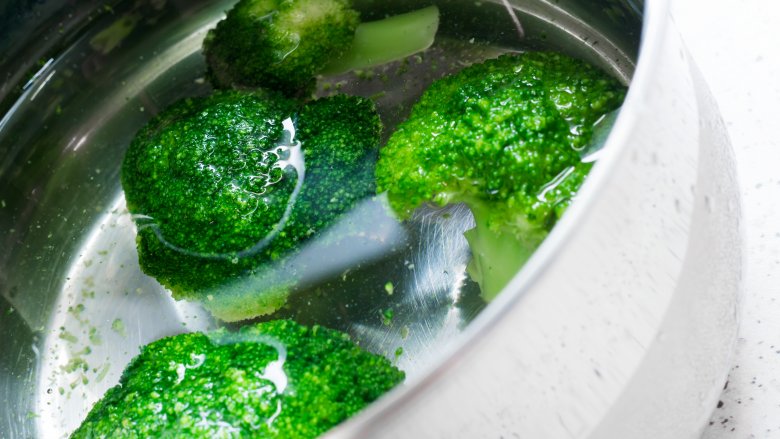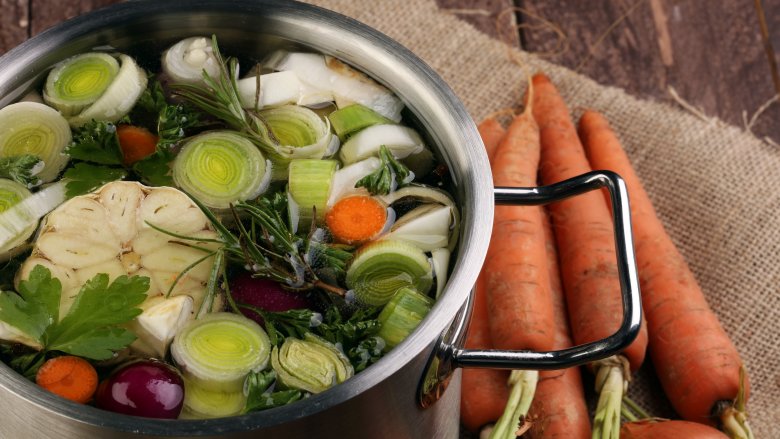Mistakes You're Making When Cooking Vegetables
If your nightly solution to vegetables is a can of limp green beans, you're not doing yourself (or the green beans, for that matter) any favors. Veggies have the potential to be the favorite thing on your plate — that is, if you do it right. The good news is it's easy to make them the star of the show — as long as you don't make these mistakes when you cook them.
You're peeling them
Sometimes there's good reason to peel your produce: super smooth mashed potatoes, anyone? But in general, there's no real reason we need to peel veggies. In fact, peeling them actually strips a lot of healthy antioxidants and fiber from your meal, plus you'll miss out on some great texture. Think twice before taking the peeler to foods like zucchini, beets, potatoes, or carrots — just be sure to thoroughly scrub or wash the skins before use.
You're roasting at too low a temp
Perfectly roasted vegetables have the power to turn even the biggest haters into their number one fan. But if what you're pulling out of the oven isn't brown and crisp outside, tender and creamy inside, something's gone wrong, and it's probably the cooking temperature.
Food52 put roasting temperatures to the test and found that 400-450 degrees is the sweet spot for most vegetables to obtain that delicious caramelized exterior while ensuring the inside is cooked through. Watch your fat though — extra virgin olive oil has a smoke point of about 410 degrees, so don't go any higher than that, or risk burnt oil-flavored veggies. To roast at a higher temp, try peanut oil or ghee (clarified butter).
You're using the wrong pan
But wait, there's more. Optimal oven temperature isn't the only factor to pay attention to when roasting veggies. You also have to have the right pan. Don't worry... it's just a regular ol' baking sheet.
Baking sheets are the perfect pan for roasting veggies because of their low sides. Anything too high will prevent water from evaporating, which could lead to soggy veggies.
You're crowding the pan
And speaking of sogginess, make sure that you're not crowding the pan, either. Too many vegetables on one baking sheet will mean you're steaming, not roasting, and you'll never achieve that gorgeous caramelization you're looking for. If your pan isn't large enough, you're better off dividing the veggies into two smaller batches.
You're not "hard roasting" them
Never heard of hard roasting? You're not alone, but it just might become your favorite way to cook veggies...
Hard roasting isn't that much different from regular roasting — you cook vegetables tossed in oil and salt on a baking sheet at 450 degrees, flipping them every now and then to ensure even caramelization. But here's the kicker: You put the baking sheet directly on the oven's floor. Not on a rack just above the floor — on the floor itself. Placing the sheet on this super-hot surface starts the searing process right away, and gives the veggies that beautiful brown crust.
You're not cutting them the same size
You don't want to end up with half your roasted veggies uncooked, so make sure you're cutting everything into equal sizes. Shoot for 1-inch to 2-inch cubes for things like carrots, potatoes, and turnips. Tip: If you're tossing onions in the mix, make those pieces larger to account for the quicker cooking time.
You're not seasoning them properly
There are two camps when it comes to salting roasted vegetables: Season before roasting, and season after. Those who say you should wait say the salt draws moisture out and creates steam while roasting. One Serious Eats writer put this to the test and found that the unsalted veggies dried out and became almost dehydrated, while the pre-salted version got nicely caramelized. The moral of the story? Toss your vegetables in oil and salt before roasting. And don't forget the pepper.
Other seasonings — dry rubs, spice blends, or heartier herbs like thyme and rosemary — can be tossed with the veggies prior to roasting. Leave the more delicate herbs like parsley and cilantro for after.
You're not maximizing the surface area
When possible, cut things into longer pieces (rather than cubing) to maximize the surface area hitting the pan. By halving carrots from root to end and cutting potatoes into wedges, for instance, more of the vegetable is touching the pan. That means more caramelization, which means more flavor. Win, win.
You're not oiling the grill grates
Grilling is a delicious alternative to steaming or roasting vegetables, and it's super easy. Toss 'em on alongside your steak and you've got dinner in minutes with no pans to clean afterwards. But — there's always a "but," isn't there? — make sure you're treating those veggies right when it comes to the oil. You definitely need oil so nothing sticks to the grill, but oiling the veggies themselves can lead to it burning. The solution? Oil the grates instead. You get the non-stick properties with none of the burn.
You're using fresh instead of frozen
It's been drummed into our heads for so long that fresh is best that we tend to eschew frozen vegetables. But sometimes, like it or not, they're actually better.
Take peas, for instance. Fresh peas are great, but almost immediately upon picking their sugars turn to starch, which gives them a chalky and grainy texture. So unless you're using them right away, frozen is the way to go.
Spinach is another example where frozen beats fresh. Of course, if you're making a salad you'll need the real deal, but take the frozen route for other things if you can. It packs four times the amount of nutrients as fresh does into one cup.
You're boiling instead of steaming
If you're boiling veggies, you're not doing them any favors. Not only are you losing nutrients that leach into the water as they boil, but you're also losing texture, and mushy vegetables are nobody's friend. Steaming ensures that your veggies remain crisp, colorful, and packed with all those healthy vitamins and antioxidants (you know, the reason you're eating them in the first place).
You're not using the right amount of oil
Not all veggies are created equal when it comes to the amount of oil they need. Bon Appétit senior food editor Alison Roman says, "Vegetables with porous flesh, like mushrooms and eggplant, need a little more oil than, say, root vegetables." About two tablespoons of oil is usually all you need for a full baking sheet, but adjust accordingly depending on your veggies.
You're cooking everything together
If you follow the "cut everything in equal sizes rule," you'll get good results — as long as the vegetables have similar cooking times. But if you're tossing potatoes (slow-roasting) and asparagus (quick-roasting) together, chances are the asparagus will be mush long before the potatoes are done. You can cut the heartier slow-roasting veggies into much smaller pieces, but if the cooking times are seriously varied, you'll be better off roasting each item separately and combining after cooking.
You're overcooking them
Turns out boiling isn't the only cooking method that causes your veggies to lose their nutrients. No matter how you're preparing your vegetables, if you're overcooking them, their nutritional content goes down. In general, the shorter the cooking time, the better, as far as vitamins and antioxidants go.
You're throwing out the scraps
Think of how much food waste you have after making a veggie-full meal. Carrot tops, root ends of onions and leeks, celery leaves, potato skins — all of these scraps can be saved to make homemade stock. (Avoid any vegetables that will flavor the stock too strongly, like cabbage and broccoli.) Collect all your discarded vegetable bits (freezing works well) until you have about four cups worth, throw them in a pot with two quarts of water, and simmer away. Now you've got homemade stock and no waste.
